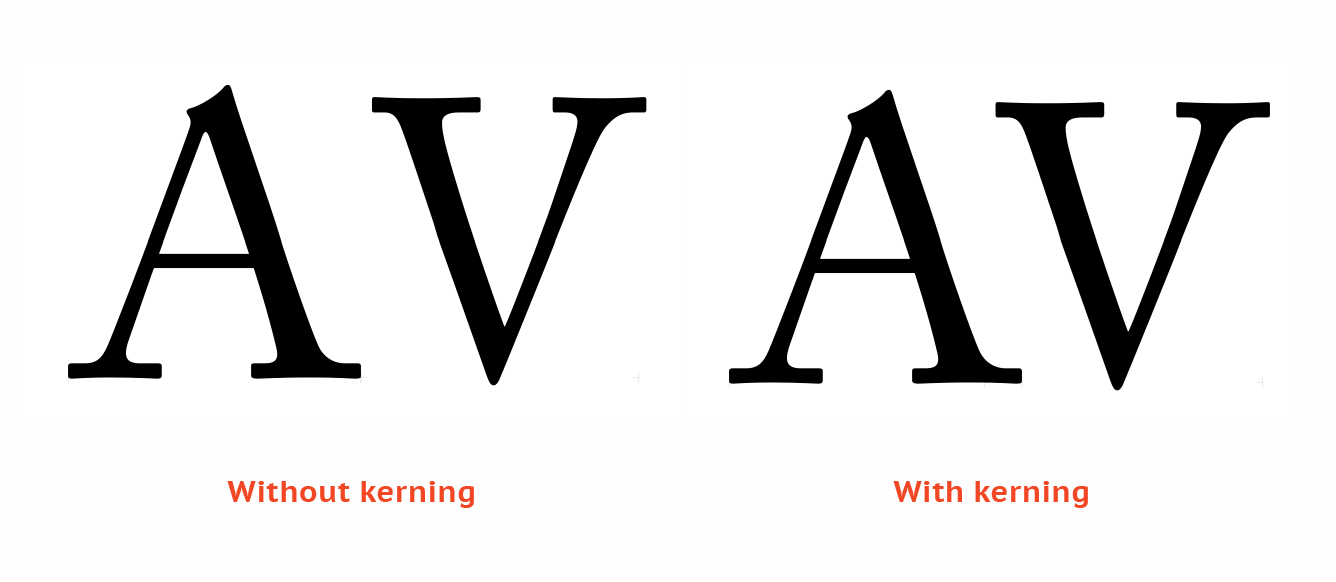Kerning»
Kerning is the process of adjusting the space between pairs of glyphs, such as “Av”,“LT” and “To”, to avoid awkward-looking gaps between them.

Older font formats such as Type 1, Multiple Masters, TrueType without OpenType tables implement kerning using lists of kerning pairs. Each kerning pair defines the number of font units by which the right sidebearing of the first glyph should be shifted horizontally when it is followed by the second glyph in the pair. This approach leads to two problems.
First, when dealing with accented characters, many pairs with duplicate values need to be defined. For instance, the pairs “Av”, “Äv”, “Áv” etc. usually need to be kerned by the same amount, yet each of them needs to be defined separately, otherwise they will not be kerned.
Second, different letters may share the same outer shape on one or both sides—such as the left side of letters C, G, O—so they could share the same kerning values. Once again, kerning pairs with the same values need to be defined. This duplication results in large tables that increase the size of the font file, and can hamper the performance of some applications. To address this issue, a more sophisticated kerning approach, called Class kerning, was developed for OpenType fonts. Class kerning is defined in the glyph positioning (GPOS) feature kern.
For details on how to edit kerning in FontLab VI, see Editing Kerning.